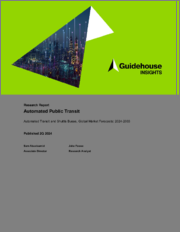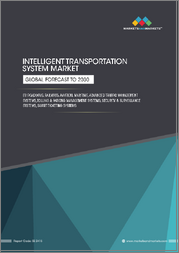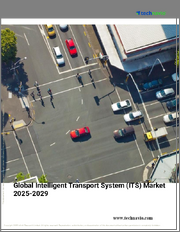
|
시장보고서
상품코드
1476283
세계의 자동 대중 교통 시장 - 자동 교통 버스 및 셔틀 버스, 시장 예측(2024-2033년)Automated Public Transit - Automated Transit and Shuttle Buses, Global Market Forecasts, 2024-2033 |
||||||
차량 자동화는 수십 년 동안 개발자들의 숙원이었습니다. 현재 일부 도시와 시장에서는 운전자 없는 소형차(LDV)가 보급되기 시작했습니다. 그러나 이 기술이 아직 활용되지 않은 분야는 교통 분야입니다. 자동화 된 대중 교통은 LDV 자동화의 많은 이점을 제공하고 몇 가지 더 많은 이점을 제공합니다. 교통 차량은 운행 설계 영역이 제한되어 있기 때문에 차량을 정지시키는 예외가 적습니다. 또한 교통 차량은 일반적으로 저속으로 주행하기 때문에 충돌 시 피해를 줄일 수 있습니다. 또한 자동화는 COVID-19 사태 이후 교통기관이 현재 직면한 인력 배치 문제를 상당 부분 해결할 수 있으며, 운전자가 승객의 승차 경험에 집중할 수 있도록 운전자를 더 많이 훈련시킬 수 있습니다.
자동화된 대중교통은 아직 개발 초기 단계에 있으며, 2024년에 판매될 예정인 자율주행차는 300여 대에 불과합니다. 그러나 2033년에는 그 수가 1만 1,500대 이상으로 증가할 것으로 예상됩니다. 자동 대중 교통은 전체 교통 차량 시장에서 아직 작은 부분이지만 향후 10년 동안 큰 성장이 예상됩니다.
이 보고서는 세계 자동 대중 교통 시장을 조사하여 매출 및 수익 예측, 채택 촉진요인 및 장벽에 대한 세부 정보, 산업 밸류체인 분석 등을 제공합니다.
목차
제1장 주요 요약
- 시장 개요
- 범위
- 시장 예측
제2장 시장 문제
- 성장 촉진요인
- 노동력 절감
- 안전성
- 비용 절감
- 한정된 운행 공간
- 액세스성
- 장벽
- 규칙
- 요금
- 사회 인식
- 교통기관 타성
- 가격 설정
- 기타 비즈니스 문제
제3장 산업 밸류체인
- 경쟁 상황
- 비즈니스 모델의 진화
제4장 시장 예측
- 예측 방법
- 시장 예측
- 세계의 버스 시장
- 세계의 교통 버스 시장
- 세계의 셔틀 버스 시장
- 자동 교통 버스 판매량
- 자동 교통 버스 매출
- 자동 셔틀 버스 판매량
- 자동 셔틀 버스 매출
- 자동 셔틀 버스 이용 사례 예측
- 교통용 자동 셔틀 버스
- 사람들의 이동 수단으로서의 자동 셔틀 버스
- 보조적 교통용 자동 셔틀 버스
제5장 결론·추천
- 3개 주요 사항
- 추천
- 교통 사업자
- 버스 OEM
- 차량 자동화 개발업체
- 주택 개발업체
제6장 두문자어와 약어 리스트
제7장 목차
제8장 도표
제9장 조사 범위, 정보 출처와 조사 방법, 주석
ksm 24.05.17Vehicle automation has been the white whale of developers for decades. Now, fully driverless light duty vehicles (LDVs) are beginning to proliferate in certain cities and markets. Where this technology has not been utilized, however, is in the transit space. Automated public transit offers many of the benefits of LDV automation and offers a few more. The limited operational design domain of transit vehicles means fewer exceptions to interrupt the vehicle. Transit vehicles also typically follow lower speed routes, reducing harm in the event of a crash. In addition, automation can potentially solve many of the staffing issues transit agencies currently face in the wake of the COVID-19 pandemic, allowing drivers to be trained more to focus on passengers' riding experience.
Automated public transit is still in the nascent stages of market development, with just over 300 hands-off, eyes-off, brain-off automated transit vehicles expected to be sold in 2024. However, that number is expected to grow to over 11,500 vehicles sold in 2033. While automated public transit is still a small segment of the overall transit vehicles market, it is expected to see significant growth over the next decade.
This Guidehouse Insights report provides automated public transit market forecasts, a deep dive into the drivers and barriers to adoption, and an industry value chain analysis. It provides sales and revenue forecasts for transit automation segmented into the two main vehicle sizes for the 10-year period from 2024-2033. These forecasts are further segmented by region and use case.
Table of Contents
1. Executive Summary
- 1.1 Market Overview
- 1.2 Scope
- 1.3 Market Forecast
2. Market Issues
- 2.1 Drivers
- 2.1.1 Workforce Reductions
- 2.1.2 Safety
- 2.1.3 Cost Savings
- 2.1.4 Limited Operating Spaces
- 2.1.5 Accessibility
- 2.2 Barriers
- 2.2.1 Regulations
- 2.2.2 Cost
- 2.2.3 Public Perception
- 2.2.4 Transit Agency Inertia
- 2.3 Pricing
- 2.4 Other Business Issues
3. Industry Value Chain
- 3.1 Competitive Landscape
- 3.1.1 Business Model Evolution
4. Market Forecasts
- 4.1 Forecast Methodology
- 4.2 Market Forecasts
- 4.2.1 Global Bus Market
- 4.2.2 Global Transit Bus Market
- 4.2.3 Global Shuttle Bus Market
- 4.2.4 Automated Transit Bus Sales
- 4.2.5 Automated Transit Bus Revenue
- 4.2.6 Automated Shuttle Bus Sales
- 4.2.7 Automated Shuttle Bus Revenue
- 4.3 Automated Shuttle Bus Use Case Forecasts
- 4.3.1 Automated Shuttle Buses for Transit
- 4.3.2 Automated Shuttle Buses as People Movers
- 4.3.3 Automated Shuttle Buses for Paratransit
5. Conclusions and Recommendations
- 5.1 Three Big Takeaways
- 5.2 Recommendations
- 5.2.1 Transit Operators
- 5.2.2 Bus OEMs
- 5.2.3 Vehicle Automation Developers
- 5.2.4 Housing Developers



















